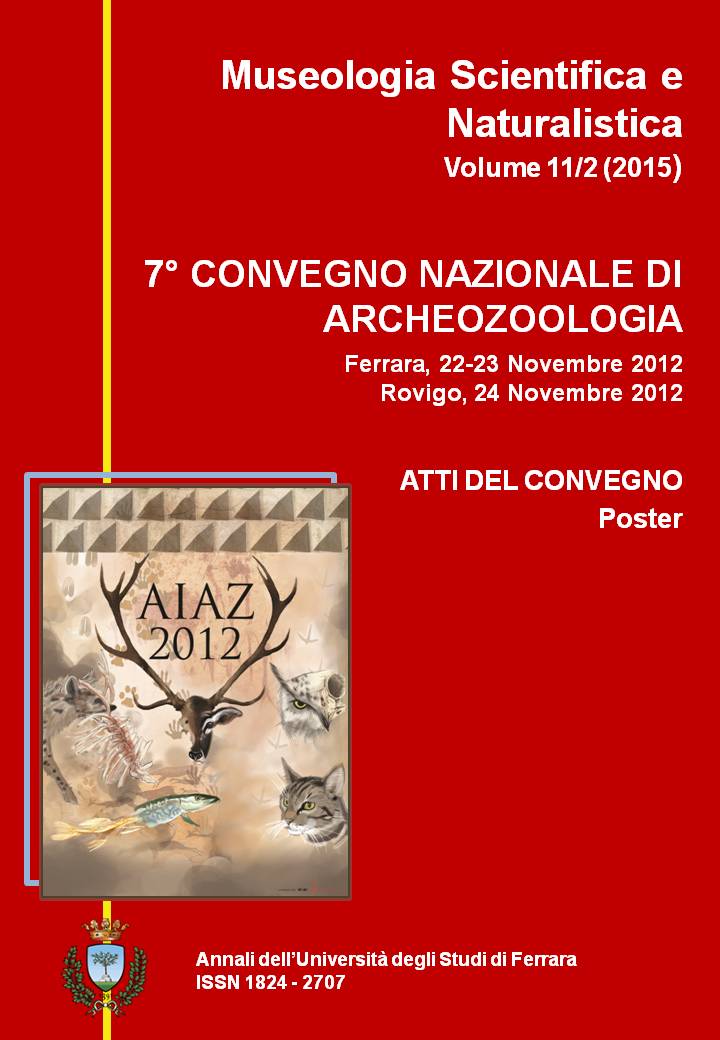Indagare la neolitizzazione attraverso l'analisi del DNA antico delle principali specie domestiche (Ovis aries e Bos taurus): l'esempio del sito del Neolitico iniziale di Rendina di Melfi (Potenza)
DOI:
https://doi.org/10.15160/1824-2707/999Abstract
Riassunto - L'analisi archeozoologica dei numerosissimi reperti raccolti nel sito del Neolitico Antico di Rendina di Melfi (VI-metà V mill. a.C.) è stata affiancata dalle analisi del DNA effettuate su resti di ovini (Ovis aries) e bovini (Bos taurus/primigenius), in un laboratorio apposito e con criteri specifici, volti a evitare la contaminazione con DNA moderno. È stato estratto il DNA da 23 resti in totale. A causa dello stato di conservazione e dell'età dei resti stessi, è stato possibile amplificare e sequenziare il DNA mitocondriale (mtDNA) un solo reperto di Ovis aries proveniente dalla capanna H11, appartenente alla prima fase di occupazione del sito; questa risulta dunque una delle più antiche sequenze genetiche note in Europa per gli ovicaprini. A partire dai dati ottenuti l'approfondimento delle analisi con nuovi campioni permetterà di indagare le modalità di introduzione di questa specie nella Penisola. Per quanto riguarda i bovini invece, tutte le estrazioni hanno dato esito negativo, indice di degradazione del DNA stesso. Potrebbero quindi esistere differenze specie-specifiche relative alla conservazione del materiale genetico, ipotesi che dovrà comunque essere approfondita con ulteriori ricerche.
Summary - Investigating Neolithization using aDNA analysis of the main domestic species (Ovis aries and Bos taurus): the case of the Early Neolithic site of Rendina di Melfi (Potenza)
The archaeozoological analysis of the large faunal assemblage collected in the Early Neolithic site of Rendina di Melfi (6th-mid 5th mill. BC) has been supported by the DNA analysis of sheep (Ovis aries) and cattle (Bos taurus/primigenius) bones carried out in a dedicated laboratory and with specific criteria in order to minimize the possibility of contamination with modern DNA.
The extraction of DNA was possible for 23 samples, but amplification and sequencing of mtDNA, due to the age and consequently poor preservation of bones, was successful only for one sample. This specimen was collected from the area of the hut H11, belonging to the first phase of occupation of this site and therefore represents one of the most ancient genetic sequences obtained for sheep in Europe.
On the basis of this data and that from the analyses of other samples, we shall be able to investigate the modalities of the introduction of this species in the peninsula. As regards cattle samples, so far all the extraction attempts failed, we therefore suggest that there could probably be species-specific differences in the preservation of genetic material.



